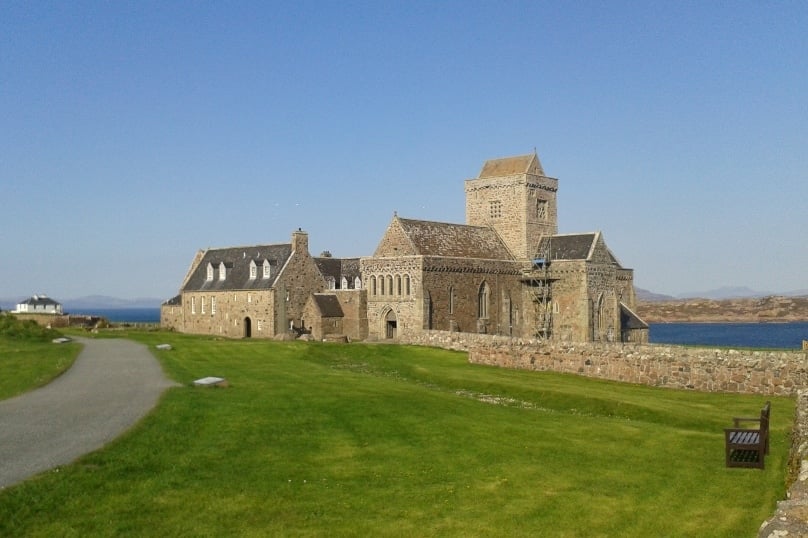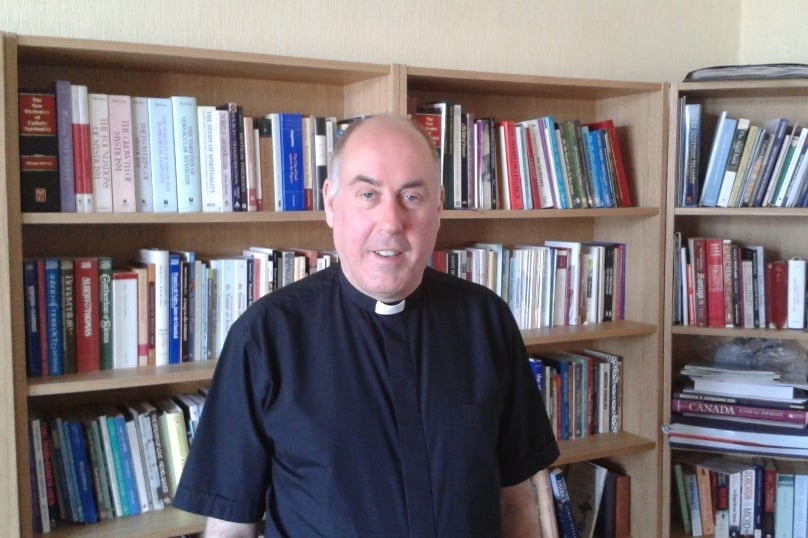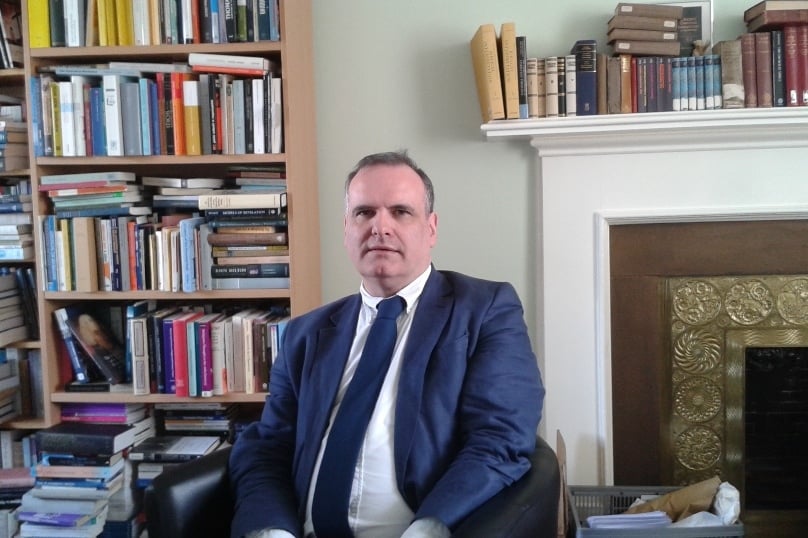
On the rocky shoreline of this Hebridean island, a rambling gray-stone abbey stands amid wind-tossed purple heather, surrounded by Celtic crosses and ancient earthworks.
When the Irish St Columba settled here with a dozen monks in the sixth century, it was a dangerous, forbidding place, peopled by Pictish tribes and feuding warlords. Today, in peaceful times, it’s still a stark setting for religious contemplation.
“St Columba’s great gift was hospitality, and we still live by this today,” explained Sacred Heart Sr Jean Lawson, who runs the island’s Catholic House of Prayer.
“It helps to know Scotland’s Catholic history to understand our presence here,” Sr Jean told Catholic News Service. “But it also pays to be tough, since the winds can be strong and the rains heavy.”
The monastic community founded by St Columba endured Viking raids, which left monks slaughtered and valuables plundered.
Its calfskin Gospel collection, the Book of Kells, illustrated around 800, was sent for safekeeping to Ireland, where it remains today. But Iona survived as a centre of learning and spirituality, and helped spread the Christian faith around Great Britain.
Benedictine monks and Augustinian nuns arrived on the island around 1200, while kings, including Macbeth, “the Red King”, were buried in the cemetery adjoining Iona’s St Oran’s Chapel.
When Protestantism swept through Scotland during the 16th century Reformation, Iona’s monastic complex fell derelict. But in the early 20th century, it was rebuilt as a Protestant-run ecumenical community by Rev George MacLeod of the Presbyterian Church of Scotland.
The Catholic prayer house on Cnoc a’ Chalmain, or Hill of the Dove, was dedicated in 1997.
As the first Catholic centre on the island in four centuries, it faced some local resistance. But the house, with crosses and icons donated by various denominations, now attracts priests and retreat groups from around the world.

“It’s wonderful that there’s now a Catholic presence on this island, and that it was organised and financed by laypeople,” said Bishop Brian McGee, whose far-flung diocese of Argyll and the Isles includes 144 islands scattered over 4345 square kilometres.
“Catholic groups can now also celebrate Mass in Iona’s main abbey, and we’ve good ties with other Christian groups, highlighting our link with the rich tradition of Columba and the Celtic saints,” he said.
As an international, interdenominational centre, Iona itself is distinctive.
Shalome Cooper, a Canadian Methodist working at the abbey, said she was attracted to the notion of “counter-cultural living”, and by Rev. MacLeod’s vision of a place where all were treated equally.
Although you don’t have to be religious to come here, she pointed out, you have to accept Iona’s core values, which still reflect a Christian Benedictine ethos, seeing work as a form of worship.
“People come to Iona who are grieving or missing something in their lives, and needing to be reshaped by the Holy Spirit,” Cooper explained.
“They arrive here as strangers and leave as a community. This is what gives Iona its spirit. It’s easy to be inspired by God’s creation here, in a landscape which remains the same but also changes from moment to moment.”
Such an experience of community, against a backdrop of soaring hills and stormy seas, has brought volunteers to Iona from as far afield as Russia, Australia, South Africa and Argentina.

It’s also one which Mark Elliott, head of the School of Divinity at the University of St Andrews, thinks has social and political implications.
The generation now heading Scotland’s churches were students when the Iona community was in its heyday in the 1960s and 1970s, he noted, and many have been influenced by the Christian idealism embodied in its appeals to mission and common living.
Some prominent Christians, including Rev John Chalmers, principal clerk to the general assembly of the Church of Scotland, think Iona could even become a centre for world peacemaking.
“The effort you have to make to get there, and the seclusion and freshness you experience, could well make it a useful venue for bringing politicians or government leaders together from disparate backgrounds,” Rev Chalmers told CNS in Edinburgh.
Bishop McGee hopes from his base at the Cathedral Church of St Columba in Oban to strengthen Catholic involvement in Iona and develop the area’s pilgrimage potential.
“I think people at various stages of their faith journey could still see the remoteness of this place as a real opportunity for coming closer to God,” the bishop said.
That closeness is something Sr Jean feels every day as she gazes from retreat house across the sound, where, on a clear day, beyond the sheep and long-haired highland cattle, she can make out the coasts of Coll and Tiree, beckoning to the Outer Hebrides and the wide Atlantic beyond.
She hopes more people will further the cause of Christian unity by coming to Iona, which Rev MacLeod described as a “thin place” between earth and heaven.
“For all the troubles we experienced in the past, we all have plenty in common now, whatever our backgrounds and traditions,” said Sr Jean, who has worked on the island for 14 years.
“Despite the harsh conditions, there’s a safeness and tranquillity here which free you to think and pray – a feeling that, through the beauty of nature, you truly are close to eternity.”
